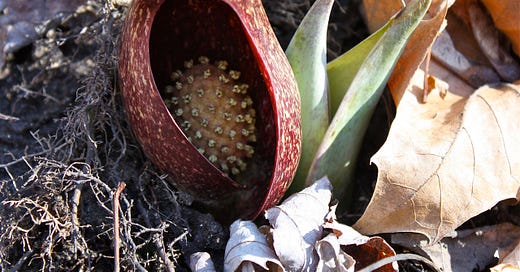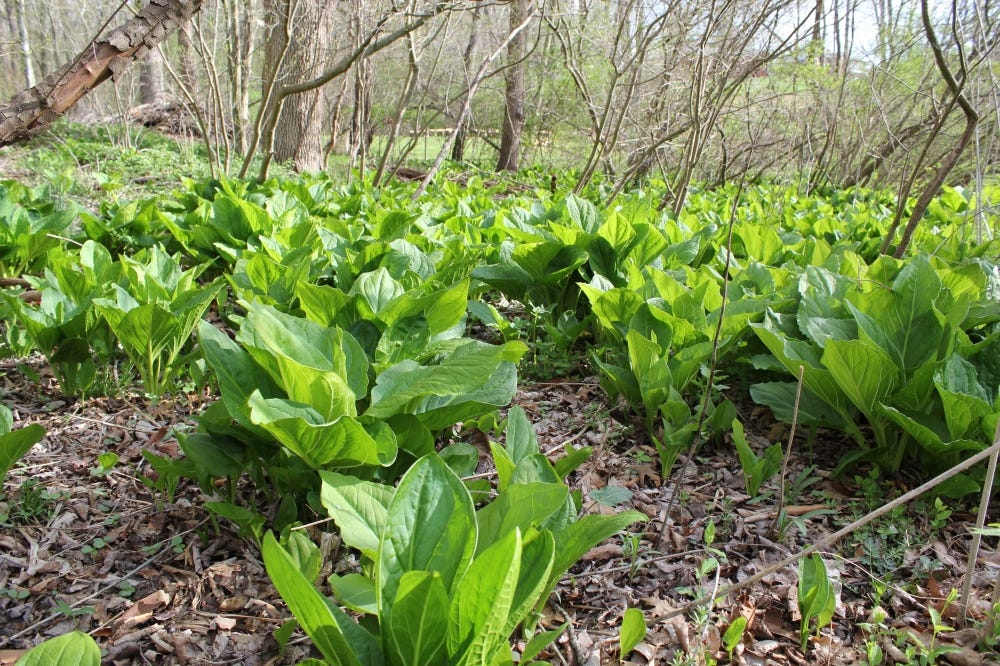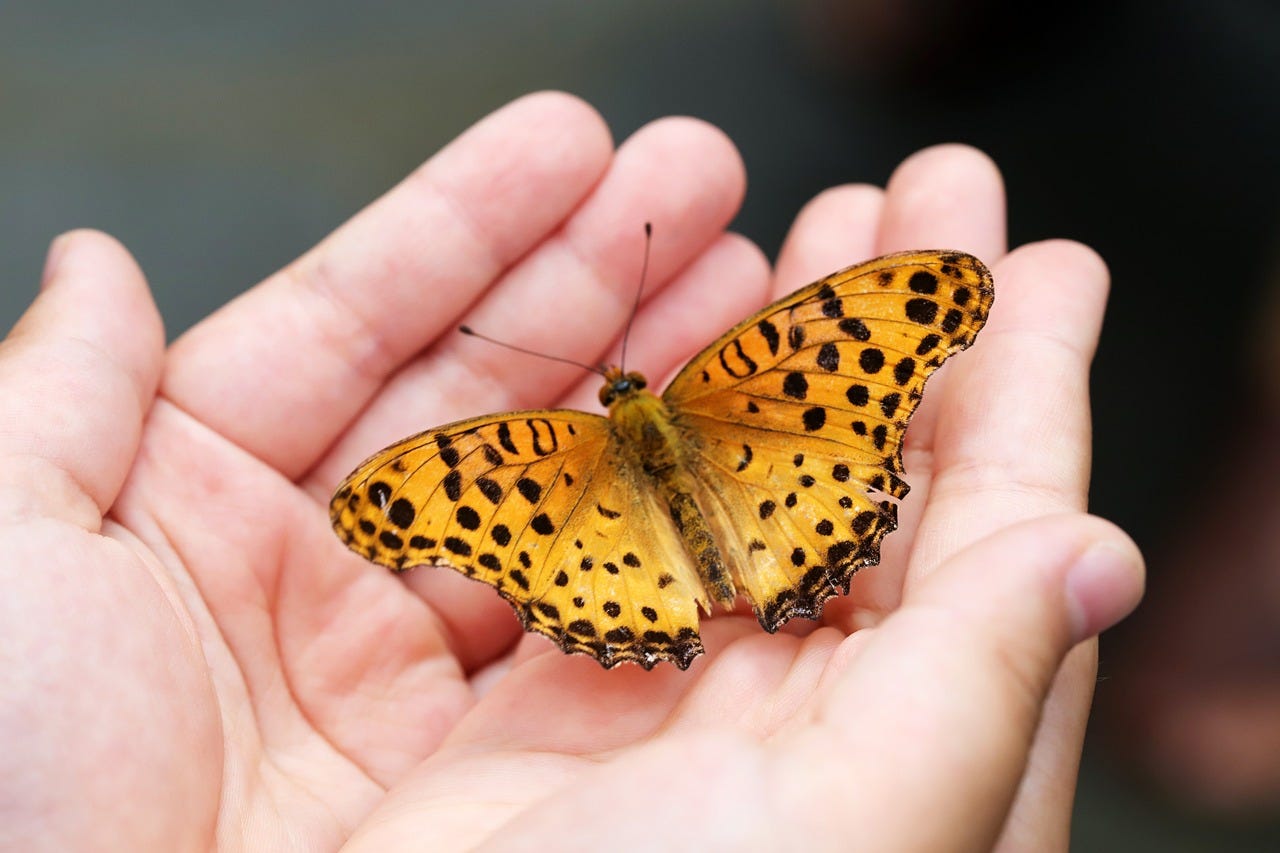If you liked reading this, feel free to click the ❤️ button on this post so more people can discover it on Substack 🙏
Welcome!
For those new here, Hedge Mystic is a reader-supported publication where I explore spiritual topics in parallel with seasonal wisdom and creative practice.
All of my articles are free to read, but you can send me a one-time donation if you like my work, book a tarot reading, or upgrade your subscription to support me long-term.
You can become a paid subscriber for a year at 20% off in April!
Nature is a Book of Divine Revelation in many spiritual traditions and for many of us individually. In theological circles, it is often understood as a book of general revelation, teaching us truths about the Divine that are understandable and applicable to all. On the other hand, special revelation comes from sacred writings and scriptures approved and authorized by a tradition.
Through this twofold communication, we find not only the general and the specific, the universal and the particular, but also unity and multiplicity. There are many specific belief systems, but Nature provides a point of commonality.
I find comfort in knowing that the mystery and beauty of Nature is a point of unity, common wisdom, and shared wonder for us despite different specific beliefs. Nature, amazing, pulsing with incredible life, resilient and wonderous, becomes a shared sacred space for everyone. Nature is also a great teacher, filled with observable object lessons and more profound mysteries for those willing to slow down, look deeply, and enter communion with her.
April 3rd’s essay It’s Still Very Early also holds true this week. The weather has been wet and chilly, keeping many plants and trees dormant. Only the most intrepid are showing signs of life. One plant that has already burst out of the earth is skunk cabbage, pictured above. It’s now well past the stage in the photo where it looks like an alien pod from another planet. Its leaves have unfurled, grown, and now honestly look like large green heads of cabbage punctuating the woodlands along creek banks and around low-lying vernal pools, which are everywhere in my neighborhood.
It’s common to see skunk cabbage pushing through the snow in early March. This plant is equipped with thermogenesis, which means it can produce its own heat to melt the snow around it and protect itself from freezing temperatures.
Its appearance in the early spring is why, for me, skunk cabbage is the essential plant to mark Easter, rather than lovely white Easter lilies, tulips, or daffodils.
There are spiritual lessons to be learned here, and they come from the humble skunk cabbage's appearance during the season of Ostara and the holy tide of Easter.
You can download an Ostara Guide and a self-led Ostara Retreat in the Hedge Mystic School of the Season Library.
Skunk cabbage relies on unusual pollinators because it blooms very early in the year. Rather than bees and wasps, flies pollinate it. As you can see above, the “flower” is quite unusual; it is without petals and not beautiful to look at. In keeping with that, the smell of the skunk cabbage, which is a smell and not a fragrance or even an aroma, is likened to rotting flesh and carrion to attract the flies.
So what are the more profound lessons we can learn?
The entire Ostara season and Easter's fundamental lesson are that life overcomes death. We observe this in the skunk cabbage, which rests for part of the year in the gloom and darkness of the underworld. Then, energy, thermogenesis in skunk cabbage and divine energy in humans, causes the underworld to release both plants and the human soul. From the stench of death comes new life. Flies, a symbol of death, catalyze pollination, the beginning of new life. The weirdness of the skunk cabbages’ appearance underscores the alien, otherworldly, beyond ordinary origin of this renewing, resurrecting work. Life from death stems from something beyond the material, and the appearance of the skunk cabbage and its stench of death reveals the spiritual lesson to us.
The skunk cabbage is a front runner. Its peculiar and unique nature paves the way for all the blooming and blossoming species that will follow. I find wonder in the skunk cabbage’s realities. It’s not beautiful; it smells fetid. It cooperates with unlikely pollinators, and yet within itself, it generates the needed energy and heat to break through the forces of death, rise into the light, and generate new life. That’s why I find it the perfect Easter plant.
We are on the cusp of Easter, and if you are moving through Holy Week as I am, you may see further parallels between the suffering servant and the skunk cabbage. The passage below could well describe the skunk cabbage shooting up from the ground, ugly, with no pleasing appearance, masking its power to use death as a gateway to life.
He grew up before Him like a tender shoot,
And like a root out of dry ground;
He has no stately form or majesty
That we would look at Him,
Nor an appearance that we would take pleasure in Him.~ The Prophecy in Isaiah 53
If you are inclined to read the Book of Nature to discover spiritual wisdom and truth, I encourage you to be outdoors and visit the sanctuaries and cathedrals Nature offers. Listen to her choirs, get to know her congregants. Learn their language, seek their lessons, and ponder them in your heart.
Are you moved by this piece and want the Hedge Mystic Community to benefit and grow? Then, make a one-time donation. Click the Donate button below!
Thank you for reading Hedge Mystic and participating in this vibrant and growing community of creative, spiritual humans. You are always welcome here, appreciated, and loved.
Hedge Mystic is a reader-supported publication based on a value-for-value premise. If you find value in Hedge Mystic, support my work and consider becoming a paid subscriber. Your involvement and financial support are deeply appreciated. Thank you.








Lots of skunk cabbage on the property I live on too. I do find that it has its own beauty. I didn’t know about the flies pollinating it! I remember looking up info about it when I first saw it and found the roots were used as medicine. The fact that it gives off heat to come through the snow gives a message of hope, doesn’t it?